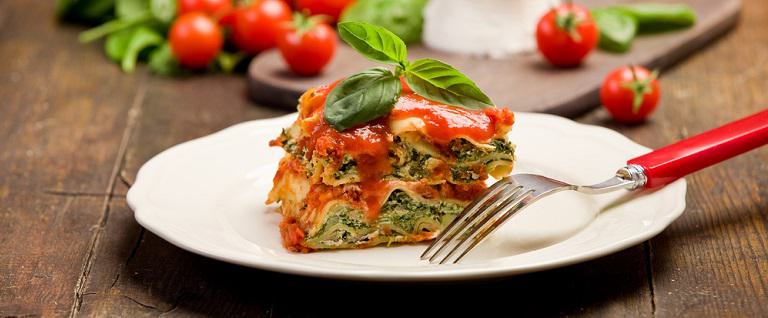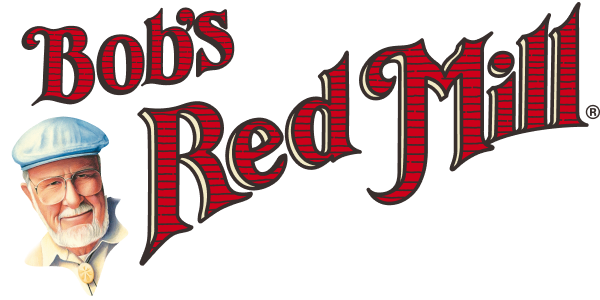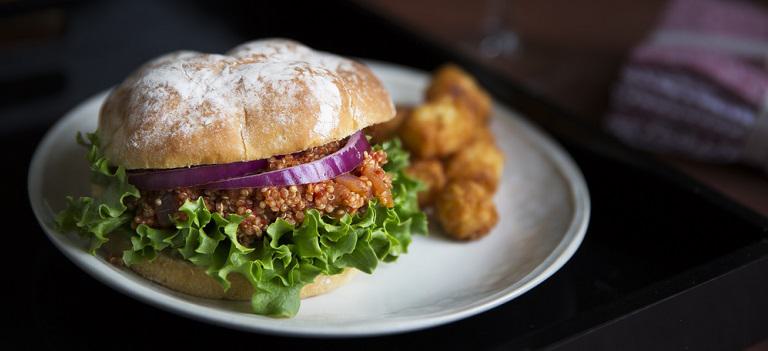


 Dont know how textured vegetable protein is made? Textured vegetable protein is a vegan meat substitute that is high in both protein and fiber. It's typically made from defatted soy flour, although it can be made from various legumes and ingredients. After processing, TVP is cut into the desired shape and dehydrated to create a shelf-stable plant-based product. Made in different shapes and sizes, TVP can be purchased in everything from small granules to large chunks and comes in both flavored and unflavored varieties. While most textured vegetable protein comes unflavored, some brands choose to season TVP and flavor it as specific meat, such as taco filling or ground beef.
While textured vegetable protein is prevalent in vegan and vegetarian cooking, it's also commonly used as a meat extender by traditional cooks and incorporated into popular meat dishes like Sloppy Joes, chili and lasagna. This being, if you've enjoyed these dishes at a restaurant, you've likely eaten TVP before and never even realized it.
Dont know how textured vegetable protein is made? Textured vegetable protein is a vegan meat substitute that is high in both protein and fiber. It's typically made from defatted soy flour, although it can be made from various legumes and ingredients. After processing, TVP is cut into the desired shape and dehydrated to create a shelf-stable plant-based product. Made in different shapes and sizes, TVP can be purchased in everything from small granules to large chunks and comes in both flavored and unflavored varieties. While most textured vegetable protein comes unflavored, some brands choose to season TVP and flavor it as specific meat, such as taco filling or ground beef.
While textured vegetable protein is prevalent in vegan and vegetarian cooking, it's also commonly used as a meat extender by traditional cooks and incorporated into popular meat dishes like Sloppy Joes, chili and lasagna. This being, if you've enjoyed these dishes at a restaurant, you've likely eaten TVP before and never even realized it.
 Textured vegetable protein is nearly always sold in its dehydrated form. Because of this, you will need to hydrate it in water or broth before cooking with it. While water will hydrate TVP efficiently, because textured vegetable protein is bland on its own, we recommend using vegetable broth or soup to hydrate it while simultaneously adding flavor. If you add textured vegetable protein to a dish containing a liquid base like soup or pasta sauce, the TVP can be stirred in and rehydrated while the meal is simmering.
The way you choose to cook textured vegetable protein will largely depend on what shape you purchase it in. If you're cooking with TVP granules, then the end texture will closely resemble ground beef. Granules are ideal for making chili, Sloppy Joe's, taco filling and shepherd's pies. If you purchase larger TVP chunks, they can be cooked, battered and fried to resemble chicken nuggets and strips of meat.
Textured vegetable protein is nearly always sold in its dehydrated form. Because of this, you will need to hydrate it in water or broth before cooking with it. While water will hydrate TVP efficiently, because textured vegetable protein is bland on its own, we recommend using vegetable broth or soup to hydrate it while simultaneously adding flavor. If you add textured vegetable protein to a dish containing a liquid base like soup or pasta sauce, the TVP can be stirred in and rehydrated while the meal is simmering.
The way you choose to cook textured vegetable protein will largely depend on what shape you purchase it in. If you're cooking with TVP granules, then the end texture will closely resemble ground beef. Granules are ideal for making chili, Sloppy Joe's, taco filling and shepherd's pies. If you purchase larger TVP chunks, they can be cooked, battered and fried to resemble chicken nuggets and strips of meat.